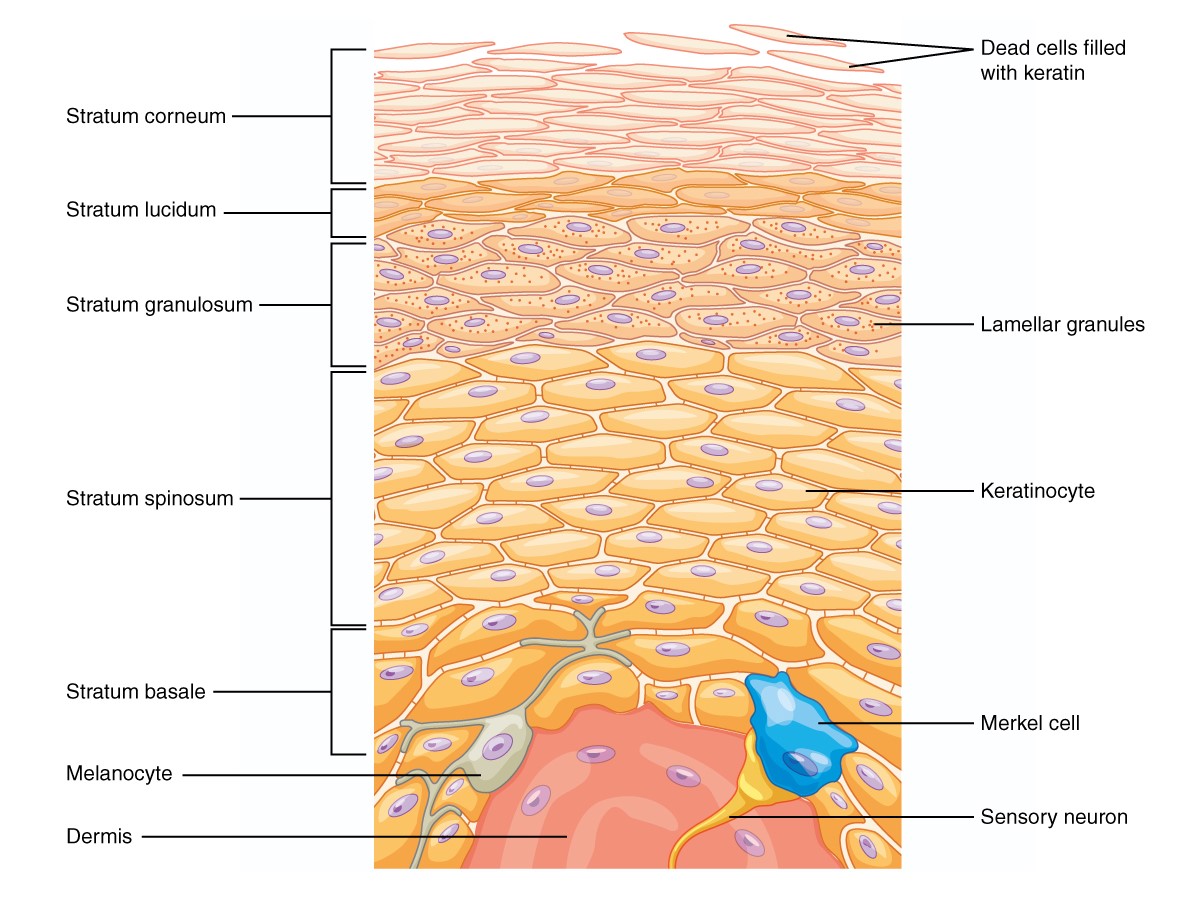Playlist
Show Playlist
Hide Playlist
Virilization and Hirsutism
-
Slides Hirsutism ReproductiveEndocrinology.pdf
-
Download Lecture Overview
00:00 Hi. In this lecture, we will review hirsutism in women. Hirsutism is defined as excessive hair growth in woman where it should not be. This can be a facial distribution or a central body distribution consistent with a male pattern. Let’s talk about hair follicles in the embryo. When do hair follicles actually develop? Do you know? It’s okay if you don’t because I’m going to tell you now. Eight to 10 weeks is usually when we see hair follicles develop from the epidermal cells. Here’s another question for you. After how many weeks do we not have new follicle development in a fetus? Well, the answer to that is after 22 weeks. After 22 weeks, no new hair follicles are made. There are 3 growing phases of the hair follicle. Here is a diagram of the anatomy of the hair follicle. I doubt you'll have any exam questions about this, but it’s just helpful to know as I discuss hirsutism in women. There are 3 growing phases: anagen, the growth phase; catagen, the transition phase; and telogen, the quiescent phase. Let’s discuss sexual hair. Sexual hair responds to androgens, specifically DHT or dihydrotestosterone, the most active form of testosterone. 01:43 Sexual hair primarily grows on the face normally in a man, abnormally in women, which is a cause for hirsutism. Sometimes you can find chest hair in women, this is also abnormal but you do see a male distribution on a man. You could have it on the lower abdomen and this sometimes is abnormal in women. Pubic hair is also controlled by DHT as well as hair in the axilla. Let’s now talk about the development of terminal hair. First, let’s define vellus hair, which is the prepubertal stage. Then with puberty onset, usually vellus hair is changed to terminal hair. Terminal hair tends to be coarser than vellus hair. Estrogens actually result in a slow growth of finer and lighter hair, and progestins have little to no effect on hair growth at all. Virilization is not to be confused with hirsutism. Hirsutism is a less severe symptomatology of hyperandrogenism. 02:52 Virilization is more severe. Let’s review the different signs and symptoms of virilization. Women may suffer from temporal balding. They may also have deepening of the voice. They may also have breast atrophy which is distressing for many women, and they can have overall changes in their body habitus with more muscularization overall. Women can also experience clitoromegaly when the clitoris becomes enlarged or lengthened. Hirsutism is different again, however, there is an excessive male pattern facial and body hair distribution in women, which is abnormal. 03:35 Remember that hirsutism reflects the interaction between circulating androgen levels and the sensitivity of hair follicles to androgen stimulation. This suggest that actually different women may be simulated differently at the level of the hair follicle. This is a high-yield fact and is often quizzed on your exams. Let’s now review the normal physiology of adrenal cortex and ovarian androgen production. When it comes to testosterone, the adrenal cortex makes about 25%, androstenedione 50%, DHEA another 50%, and DHEAS or sulfated DHEA 100%. You can have peripheral conversion of DHEAS to DHEA. Sulfatase will cleave the sulfate group. You can also have ovarian production of androstenedione as well as DHEA and testosterone. Recall that as women go into menopause, all of these hormones will go down. Now, let’s talk about testosterone in men versus women. Men usually have a total circulating testosterone between 200 and 800 ng/dL. In a normal woman, you may see between 20 and 80 ng/dL. However, not all of that testosterone is bioavailable. 05:06 Some of it is actually free. In men, 3% is free. However, overwhelmingly, the vast majority is bound to either albumin or sex hormone-binding globulin. In a normal woman, we see that about 1% is free and the majority is bound. However, in a hirsute woman, we find that the percent that is free is actually doubled. However, most of the free testosterone is still bound to either albumin or SHBG. Let’s now talk about how you would actually evaluate a patient who has hirsutism. 05:43 First and foremost, you would like to get a thorough gynecologic history. This includes the age of menarche and as you’ll recall from other lectures, the average age is 12. Then you want to ask about the description of cycles. Does she have oligomenorrhea, polymenorrhea? All of these are important. Then you’d like to ask about the duration of menses that means how long does she actually bleed. Then you’d like to review other diagnoses as well as an OB history. That means how many times she’s been pregnant, which is a G, versus how many times she has delivered, which is a P. Gravida and para is the way we communicate in OB-GYN. We also want to know a family history. Does her mother have hirsutism? Does her sister have hirsutism? We also want to know is the family generally obese? Has there been a history of infertility in her family? And what is her ethnicity? As certain as ethnicities can have higher incidences of hirsutism associated with certain diseases such as CAH. Then, you’d like to know what the patient is taking. Is she taking a medication that can cause an issue? Let’s now talk about androgen excess in general. This is a study that has consecutive experience with more than 1,000 patients. The differential diagnosis in these patients were included in this study. If you like to know more information, you can download this and look at it later. I doubt you’ll have any examination questions regarding this table, but it may be helpful to know. Let’s now review androgen secreting neoplasms. This is an uncommon cause for androgen excess in women but needs to be remembered in the evaluation. 07:30 ASN accounts for 5% of all ovarian tumors. Most are Sertoli-Leydig cell tumors, lipid, theca and cell tumors are also known to cause hyperandrogenism as well as hilar cell tumors.
About the Lecture
The lecture Virilization and Hirsutism by Lynae Brayboy, MD is from the course Reproductive Endocrinology. It contains the following chapters:
- 3 Growing Phases; Sexual and Terminal Hair
- Virilization and Hirsutism
Included Quiz Questions
When do hair follicles develop from epidermal cells during gestation?
- 8 - 10 weeks
- 1 - 2 weeks
- 3 - 4 weeks
- 5 - 6 weeks
- 7- 8 weeks
Which of the following hormones has an effect on hair?
- Dihydrotestosterone and estrogen
- Estrogen and progesterone
- Cortisol and thyroid hormones
- Epinephrine and norepinephrine
- T3 and T4
Which of the following is the "growth phase" of a hair?
- Anagen
- Telogen
- Catagen
- Vellous
- Tetagen
Which of the following is FALSE regarding hirsutism and virilization?
- Total circulating testosterone is decreased in hirsutism.
- Hirsutism reflects the interaction between circulating androgen levels and sensitivity of hair follicles to androgen stimulation.
- The testosterone attached to the sex binding globulin is decreased in a patient with hirsutism.
- The albumin bound testosterone is same in a patient with hirsutism and normal women.
- The testosterone level in a hirsutism patient is less than normal testosterone levels seen in men.
Customer reviews
5,0 of 5 stars
| 5 Stars |
|
1 |
| 4 Stars |
|
0 |
| 3 Stars |
|
0 |
| 2 Stars |
|
0 |
| 1 Star |
|
0 |
really good doctor and timing is good like it very much and i understand the lecture




